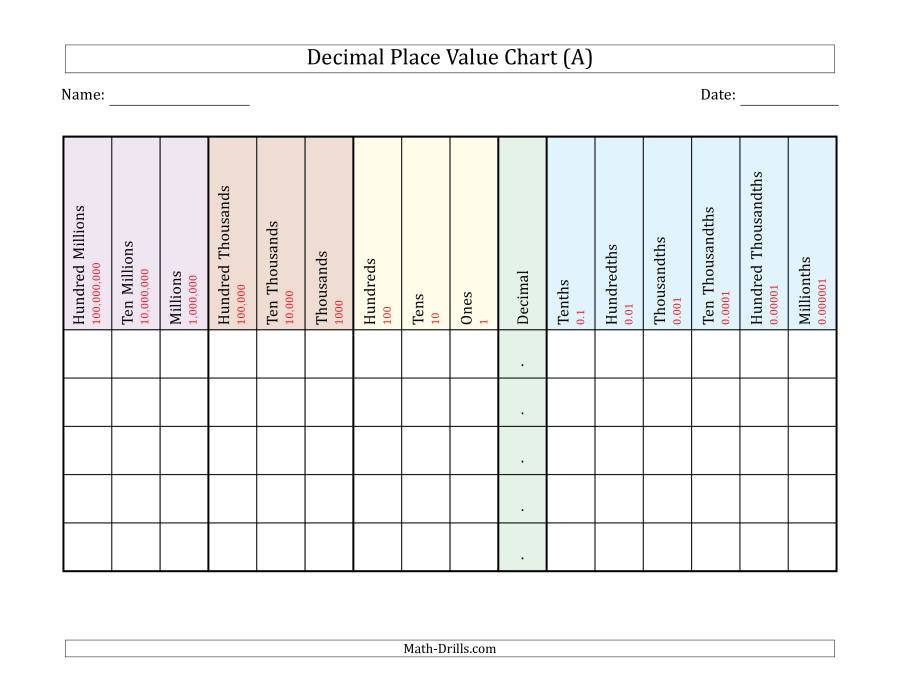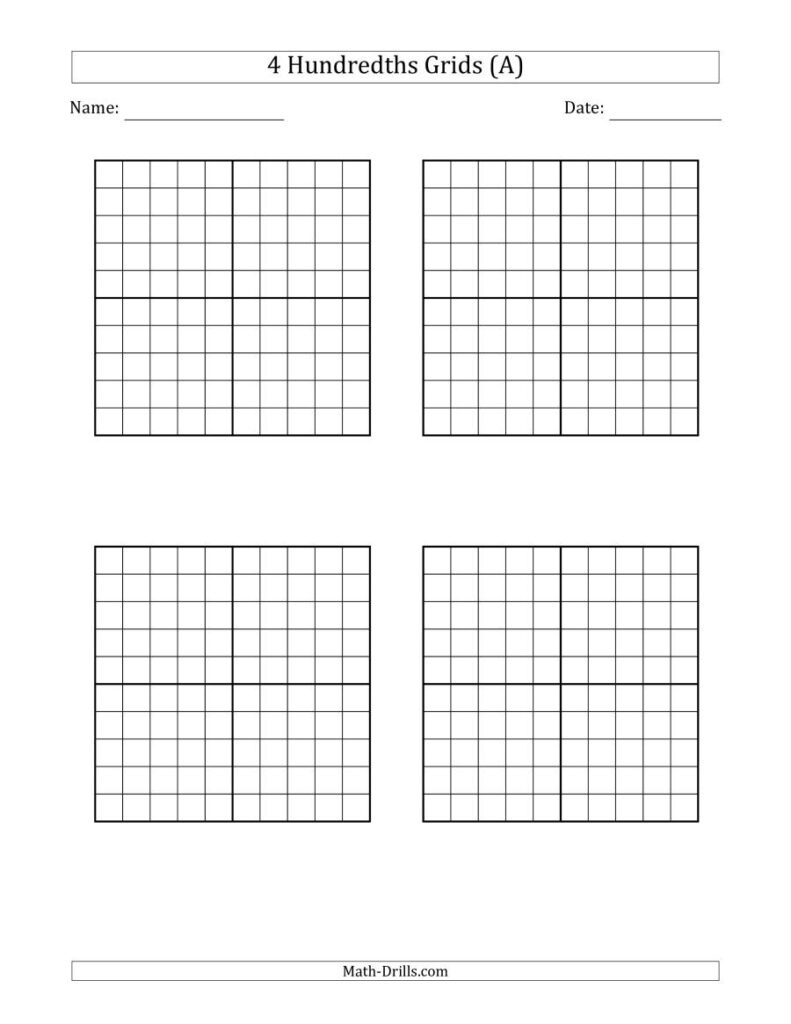
The place value charts on the website were recently improved to be more useful and attractive. The work space on each chart is now more conducive to inputting numbers and completing work on the page. Each period (set of three numbers) is a different color and is surrounded by a thicker border. If the place value chart includes decimals, the decimal symbol is in its own column with its own color and the decimal area is a different color from the rest of the chart. Name and date fields were also added. Each column title includes the place name in words (e.g. thousands) and place value written as a number (e.g. 1000).
There are many new options for place value charts. The one pictured above is the most inclusive going from the hundred millions place to the millionths place. If that is too daunting, there are charts without decimals starting with three columns (hundreds to ones) up to nine columns (hundred millions to ones). Decimal versions include two to six decimal places with various whole number columns. Euro format versions are also available where the decimal symbol is a comma, so careful which version you choose.

Many math activities can be accomplished on place value charts such as learning about numbers and place value, comparing and ordering numbers, adding and subtracting, multiplying and dividing. Using place value charts with students who have difficulty with place value can help them understand better.
A related update on the decimals page saw the thousandths and hundredths grids updated. These are often used for modeling decimals with students first learning about decimals. They can also be used as a strategy for adding or subtracting decimal numbers. The hundredths grids come in 4, 9 or 20 per page versions for this purpose. The thousandths grid, unfortunately, is so large, it only comes in a one per page version. An improvement over the old hundredths grid besides the addition of name and date fields is that the grid is now divided down the middle vertically and horizontally which effectively divides the grid into quarters (0.25) and it is easier to identify twentieths (5 squares) for example.

